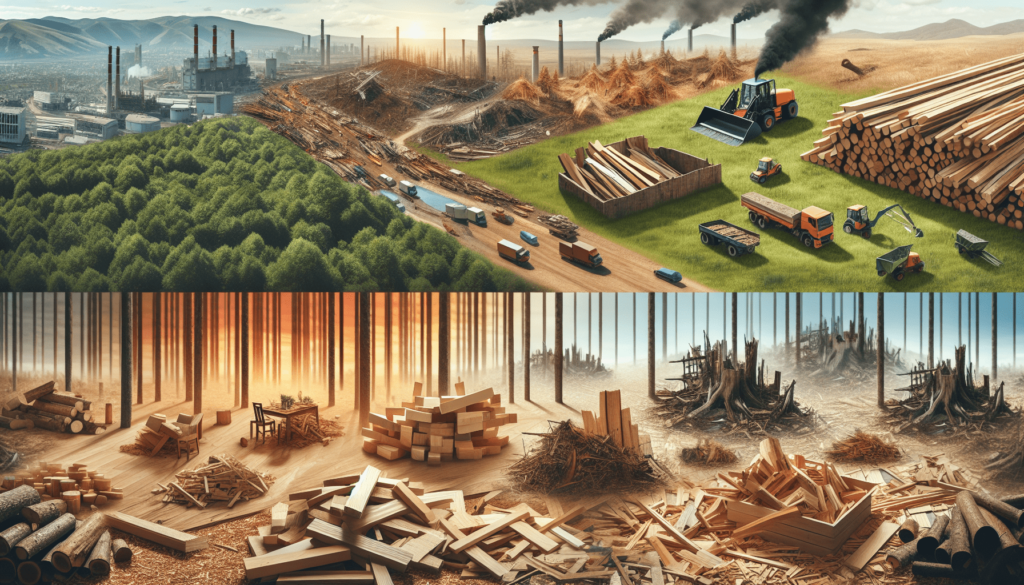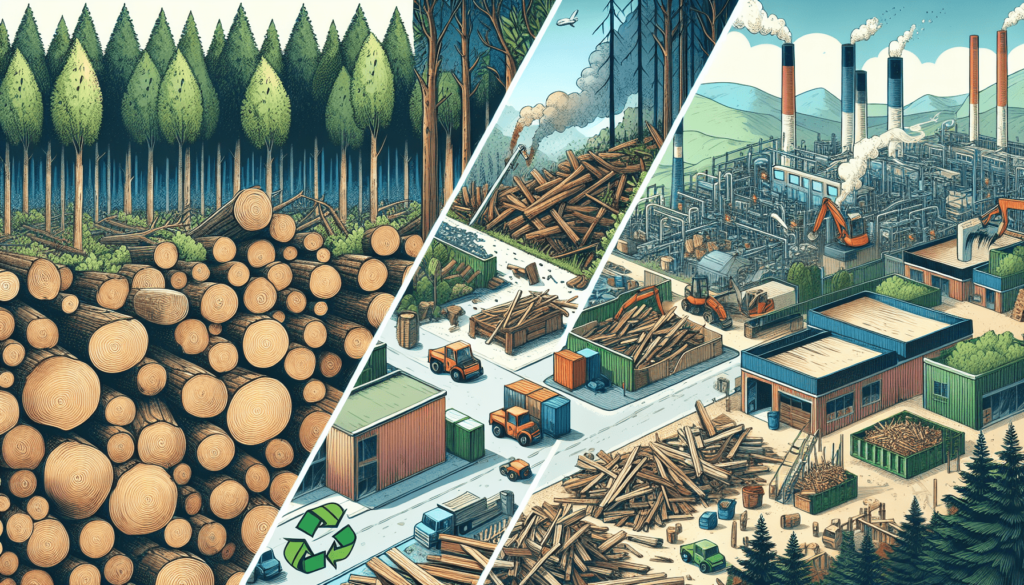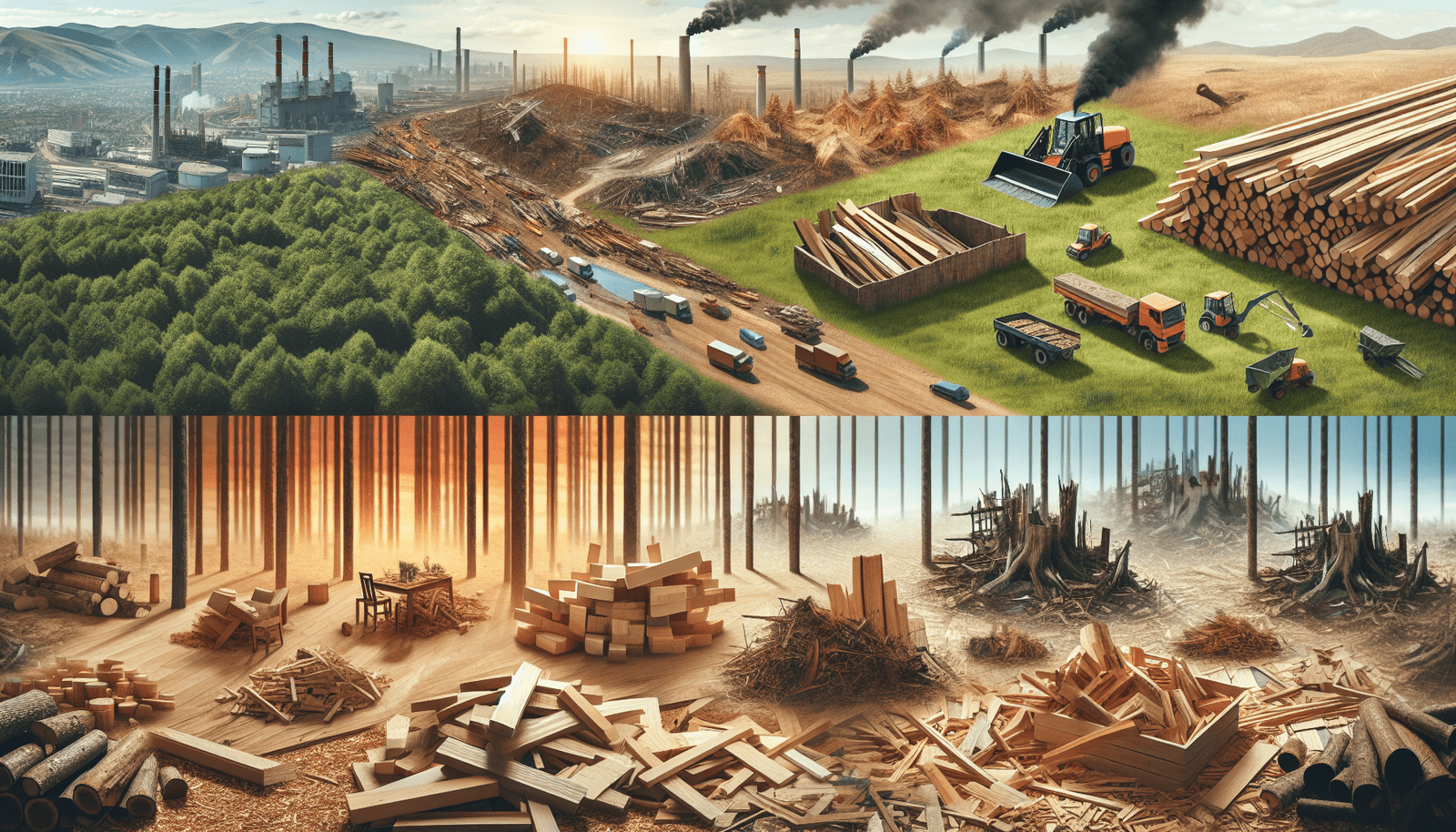Did you ever wonder where all that waste wood comes from? From construction sites to furniture factories, there are various sources that contribute to the huge amount of waste wood that ends up in landfills every year. Whether it’s leftover scraps from building projects or discarded furniture, understanding the sources of waste wood is essential in finding sustainable solutions to reduce, reuse, and recycle this valuable resource. So, let’s take a closer look at the various industries and activities that generate waste wood and explore ways to minimize its environmental impact.
Construction and Demolition Waste
Construction and demolition waste refers to the materials that are generated during the construction, renovation, and demolishment of buildings and infrastructure. This type of waste is one of the major sources of waste wood.
Building Construction
During the construction of new buildings, various wood materials are used, such as framing, beams, flooring, doors, and windows. These materials can eventually become waste wood when they are replaced due to damage, design changes, or at the end of the building’s life cycle.
Infrastructure Construction
Similarly, infrastructure construction projects also contribute to waste wood. Bridges, roads, and other infrastructure projects often require the use of wooden forms, scaffolding, and support systems, which may be discarded after the completion of the project.
Demolition
Demolition activities, whether for buildings or infrastructure, result in a significant amount of waste wood. As structures are torn down, wood materials like framing, doors, and furniture are removed and often end up as waste.
General Wood Waste
General wood waste encompasses a wide range of sources, including domestic and municipal waste, pallets and packaging, as well as land clearing and yard debris.
Domestic and Municipal Waste
In households and municipalities, wood waste is generated through various activities such as furniture disposal, home renovations, and yard maintenance. This includes items like old furniture, wooden fixtures, and garden trimmings.
Pallets and Packaging
Wooden pallets and packaging materials are commonly used in shipping and storage processes. Over time, these items can become damaged or worn out, resulting in their disposal as waste wood.
Land Clearing and Yard Debris
Land clearing and yard debris contribute to wood waste through activities like tree removal, pruning, and landscaping. Dead trees, branches, and shrubs are often disposed of as waste wood.

Wood Processing Industry Waste
The wood processing industry, including sawmills, woodworking shops, and furniture manufacturing, generates a significant amount of waste wood during its operations.
Sawmills
Sawmills produce waste wood as a byproduct of the lumber production process. This includes sawdust, wood chips, and off-cuts from the milling and cutting of logs into various lumber sizes.
Woodworking Shops
Woodworking shops, where furniture, cabinets, and other wooden products are crafted, generate waste wood in the form of sawdust, scraps, and remnants from the manufacturing process.
Furniture Manufacturing
The production of wooden furniture results in waste wood, primarily in the form of off-cuts, scrap pieces, and rejected or obsolete furniture items. This waste can occur at various stages of the manufacturing process, from initial cutting to final assembly.
Forestry and Logging Waste
Forestry and logging operations generate wood waste through their activities in harvesting and extracting timber from forests.
Logging Operations
During logging operations, trees are felled and the logs are transported for processing. This process can result in waste wood, such as branches, tree tops, and damaged logs that cannot be used for lumber production.
Road Construction and Maintenance
Road construction and maintenance in forested areas often require the clearing of vegetation, including trees. This leads to the generation of wood waste in the form of tree trunks, branches, and stumps.
Tree Harvesting
The process of harvesting trees for timber involves the removal of parts of the tree that are not suitable for commercial use. This results in waste wood, including tops, limbs, and crooked or defective sections.

Wooden Furniture and Products Waste
Obsolete furniture and discarded wooden products are significant sources of waste wood.
Obsolete Furniture
As furniture becomes outdated, damaged, or no longer needed, it is often discarded. This can include wooden chairs, tables, cabinets, and other pieces that contribute to the generation of waste wood.
Discarded Wooden Products
Wooden products, such as toys, decorative items, and household utensils, also contribute to waste wood when they are no longer in use and are disposed of.
Renovation and Remodeling Waste
Renovation and remodeling activities in both homes and commercial spaces can lead to the generation of waste wood.
Home Renovation
During home renovation projects, wooden fixtures, cabinets, flooring, and other materials may be replaced. These items can end up as waste wood, particularly if they are damaged, outdated, or no longer fit the new design or functionality.
Commercial Renovation
Similar to home renovations, commercial spaces also generate waste wood during remodeling. Retail stores, offices, and other commercial properties may dispose of wood materials like partitions, furniture, and shelving units during renovation projects.
Wooden Packaging Waste
Wooden packaging materials used in shipping and logistics are a significant source of waste wood.
Shipping Pallets
Wooden pallets are commonly used to transport goods and materials. They may become damaged or unusable over time, leading to their disposal as waste wood.
Crates and Containers
Wooden crates and containers are also used for packaging and shipping. After being used for transportation, they may be discarded as waste wood.
Land Clearing and Yard Debris
Land clearing and yard debris contribute to the generation of waste wood through activities such as landscaping and tree and shrub trimming.
Landscaping Waste
Landscaping operations often involve the removal of trees, shrubs, and other vegetation. This results in the generation of waste wood, including branches, logs, and trunks.
Tree and Shrub Trimmings
Regular maintenance of trees and shrubs in yards and gardens also leads to the generation of waste wood. Trimmings, pruned branches, and fallen trees contribute to this type of wood waste.
Wooden Utility Poles and Railway Sleepers Waste
The replacement and upgrading of wooden utility poles and railway sleepers generate waste wood.
Replacement and Upgrading
Utility companies and railway authorities often replace older wooden utility poles and railway sleepers with newer, more durable materials. This leads to the generation of waste wood as the older items are removed and replaced.
Wood Waste from Other Industries
Other industries, such as printing and paper, textile and fabric, and chemical and pharmaceutical, also generate waste wood as part of their operations.
Printing and Paper Industries
The printing and paper industries generate waste wood in the form of off-cuts, trimmings, and scraps during the production of paper, cardboard, packaging materials, and printed products.
Textile and Fabric Industries
Wood waste is generated in the textile and fabric industries through the production of wood-based fibers, such as rayon. This process involves chemically treating wood pulp to extract fibers, resulting in the generation of waste wood byproducts.
Chemical and Pharmaceutical Industries
Chemical and pharmaceutical industries may generate waste wood during their research and manufacturing processes. Wooden experimental setups, packaging materials, and wooden containers can contribute to this type of wood waste.
In summary, waste wood can originate from various sources such as construction and demolition activities, general wood waste, the wood processing industry, forestry and logging operations, furniture and wooden products, renovation and remodeling projects, wooden packaging, land clearing and yard debris, and other industries. By understanding the different sources of waste wood, strategies can be developed to reduce, reuse, and recycle this valuable resource.

Hi, I’m James Gheen, the creator behindWoodRebirth.com. As someone passionate about sustainability and environmental stewardship, I created this pioneering online platform to change how we approach wood waste and pallet disposal. Through detailed recycling and disposal guides, creative DIY projects, and upcycling inspirations, I aim to inspire individuals and businesses to adopt eco-friendly practices in their wood waste management. At WoodRebirth.com, we foster a vibrant community focused on education and engagement, encouraging the sharing of ideas and success stories. Join me in our mission to give wood waste a new lease on life, making a tangible impact on our environment, one pallet at a time.

